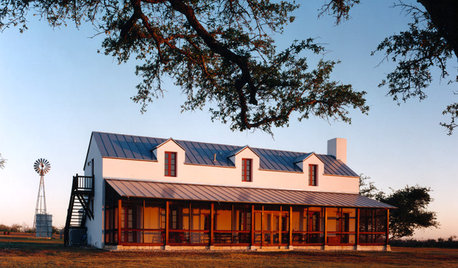F. benjamina question - holy root system!
hairmetal4ever
13 years ago
Related Stories

FARMHOUSESHouzz Tour: German Tradition Deep in the Heart of Texas
Rooted in architecture from the 1800s, this award-winning home mixes history with the vernacular of today
Full Story
EARTH DAYGrow a Beautiful Garden With Ecofriendly Greywater
Reducing home water waste means lower bills and a healthier planet. Here's how to set up a greywater home irrigation system that can help
Full Story
GREEN BUILDING5 Common-Sense Ways to Get a Greener Home Design
You don't need fancy systems or elaborate schemes to make your home energy efficient and sustainable. You just need to choose wisely
Full Story
LANDSCAPE DESIGNLandscaping Tricks to Manage Stormwater Runoff
Help rainwater absorb slowly back into the earth with paving grids, gravel beds and other porous systems
Full Story
HOUSEPLANTSHow to Add a Living Wall
Learn how to choose systems and plants, and what it will cost to bring a bit of the outdoors in or green up a garden wall
Full Story
FALL GARDENING6 Trees You'll Fall For
Don’t put down that spade! Autumn is the perfect time for planting these trees
Full Story
EDIBLE GARDENSSummer Crops: How to Grow Tomatoes
Plant tomato seedlings in spring for one of the best tastes of summer, fresh from your backyard
Full Story
FARM YOUR YARDHow to Get Good Soil for Your Edible Garden
The nutrients in your soil feed the plants that feed you. Here are tips on getting it right — just in time for planting season
Full Story
HOUSEPLANTSMother-in-Law's Tongue: Surprisingly Easy to Please
This low-maintenance, high-impact houseplant fits in with any design and can clear the air, too
Full Story
BASEMENTSDesign Workshop: Is It Time to Let Basements Become Extinct?
Costly and often unnecessary, basements may become obsolete — if they aren’t already. Here are responses to every reason to keep them around
Full StoryMore Discussions






thisisme
tapla (mid-Michigan, USDA z5b-6a)
Related Professionals
Allentown Landscape Architects & Landscape Designers · Oatfield Landscape Architects & Landscape Designers · Wixom Landscape Architects & Landscape Designers · Athens Landscape Contractors · Beachwood Landscape Contractors · Elkridge Landscape Contractors · Essex Landscape Contractors · Ponte Vedra Beach Landscape Contractors · Rockville Landscape Contractors · Wanaque Landscape Contractors · New Lenox Decks, Patios & Outdoor Enclosures · Bartlesville Fence Contractors · Homestead Fence Contractors · Selden Fence Contractors · South San Francisco Fence Contractorsthisisme
tapla (mid-Michigan, USDA z5b-6a)
thisisme